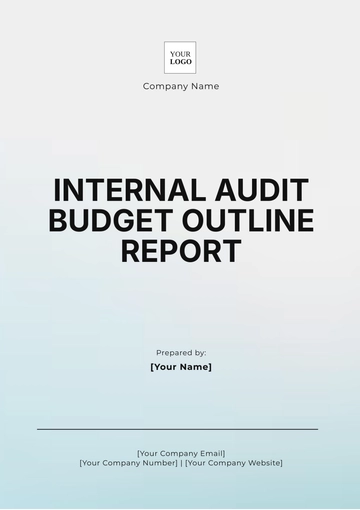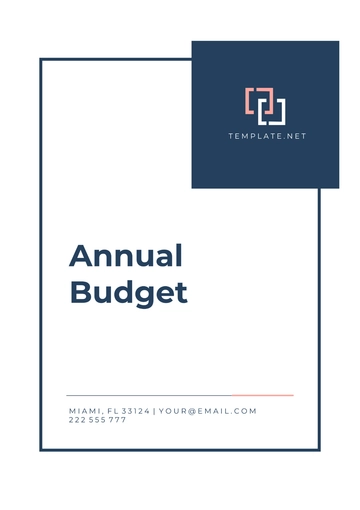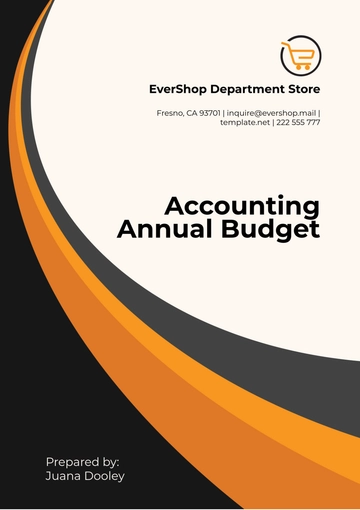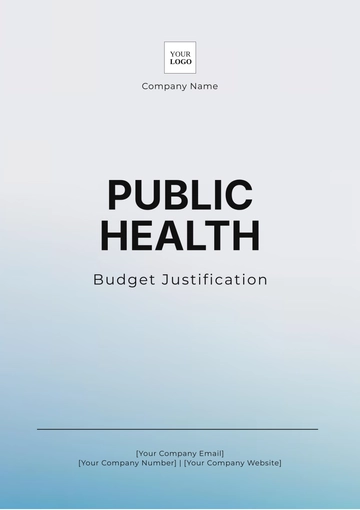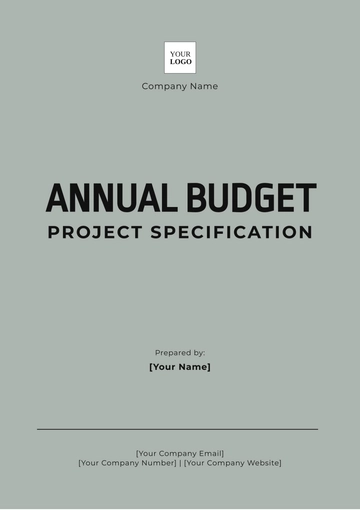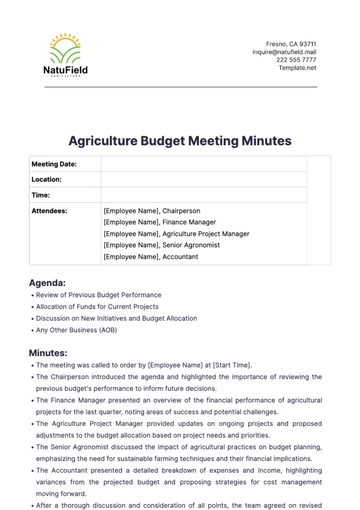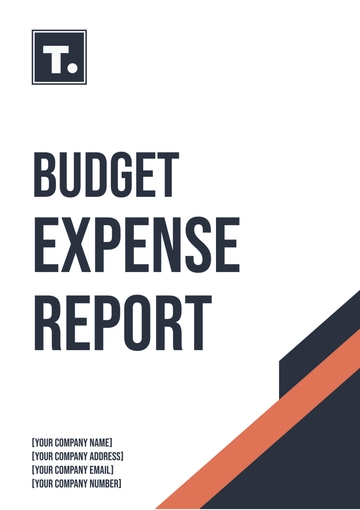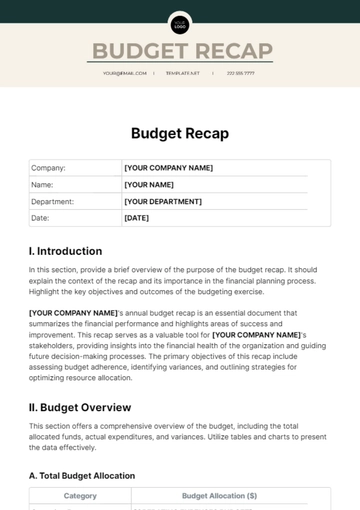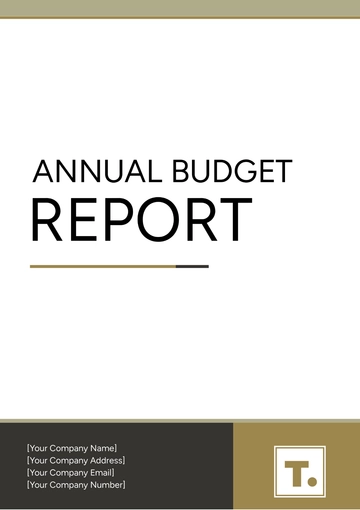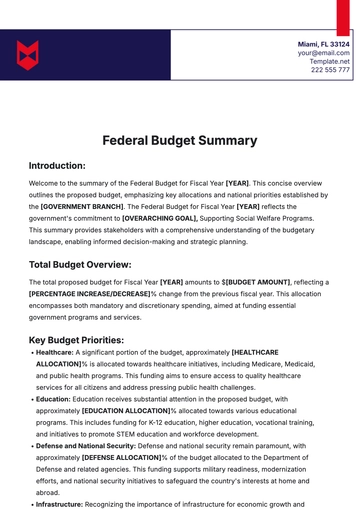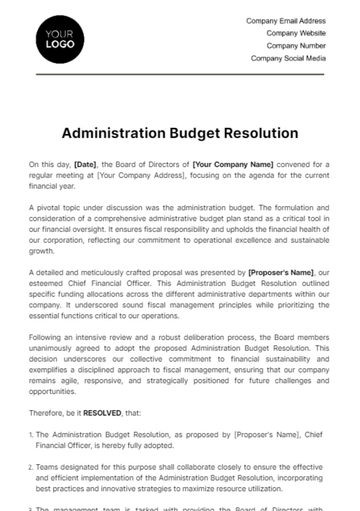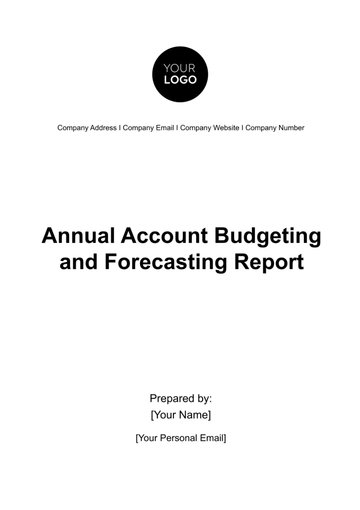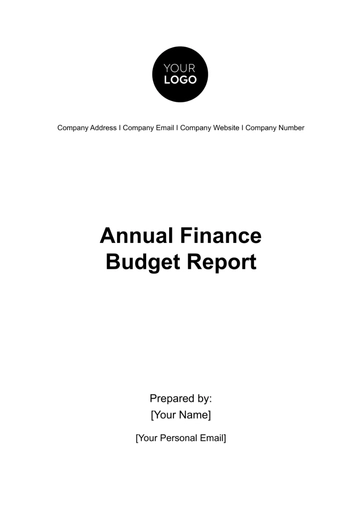Free Public Health Budget Justification
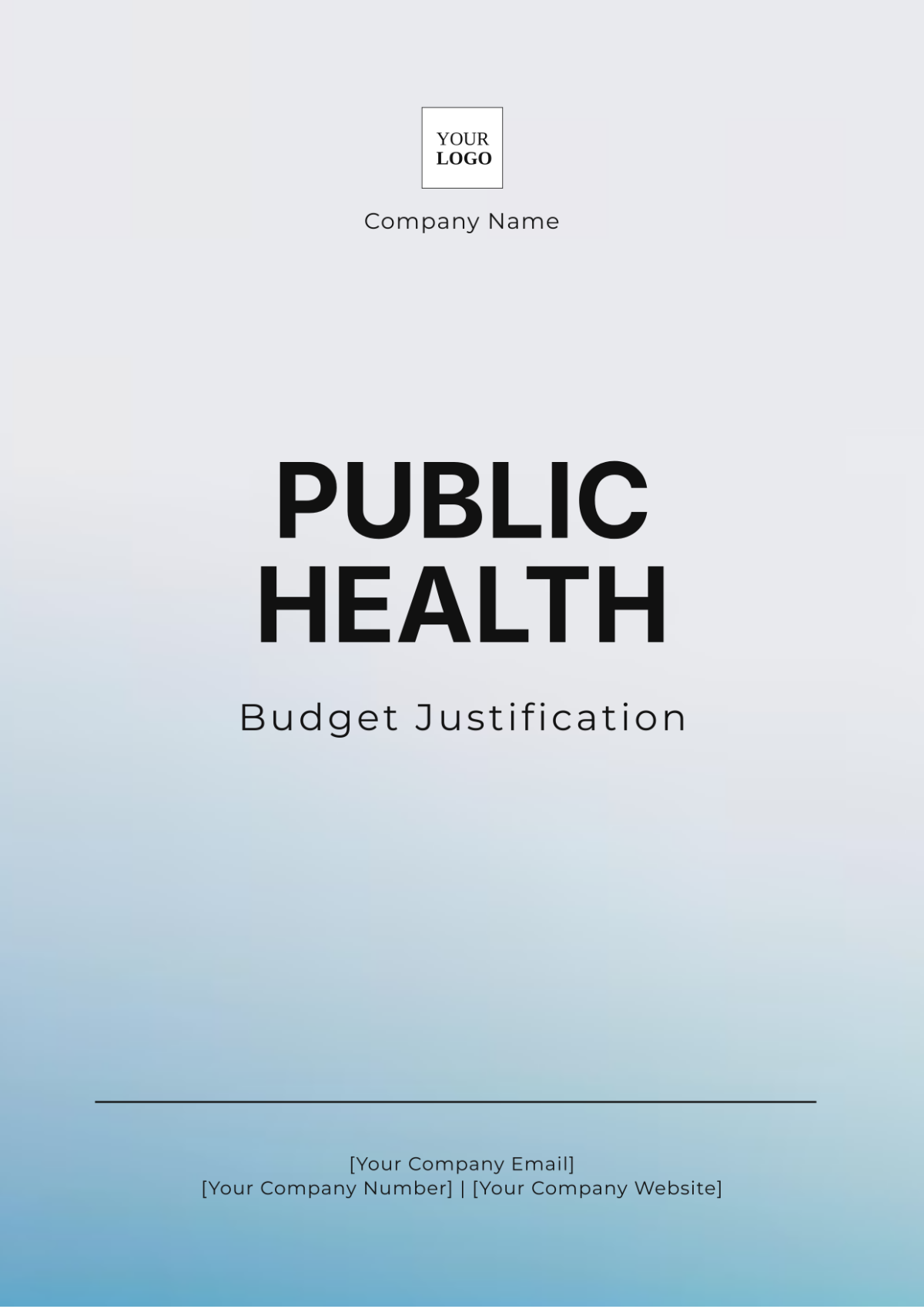
Prepared by: [Your Name]
Date: [Date]
1. Introduction
This Budget Justification outlines the financial requirements and allocations for the "Healthy Futures Initiative." The program, starting in January 2050, aims to address chronic disease management and preventive care in underserved communities. The budget detailed below supports the strategic objectives, operational needs, and compliance with funding regulations to ensure successful implementation and measurable outcomes.
2. Budget Summary
Category | Total Amount Requested |
|---|---|
Personnel Costs | $1,250,000 |
Direct Costs | $850,000 |
Indirect Costs | $400,000 |
Total Budget Requested | $2,500,000 |
3. Detailed Budget
3.1 Personnel Costs
Personnel costs cover salaries, wages, and benefits for staff working directly on the program. The following table provides a breakdown of these costs:
Position | Salary ($) | Percentage of Time | Total Cost ($) |
|---|---|---|---|
Program Director | 120,000 | 100% | 120,000 |
Public Health Specialist | 95,000 | 100% | 95,000 |
Administrative Assistant | 65,000 | 50% | 32,500 |
Research Analyst | 85,000 | 75% | 63,750 |
Justification:
Program Director: Oversees the overall management and strategic direction of the initiative.
Public Health Specialist: Provides expertise on chronic disease management and preventive care.
Administrative Assistant: Assists with administrative tasks and documentation.
Research Analyst: Conducts data analysis to evaluate program effectiveness.
3.2 Direct Costs
Direct costs are those expenses directly attributable to the program. This includes materials, equipment, and travel.
A. Materials and Supplies
Item | Quantity | Unit Cost ($) | Total Cost ($) |
|---|---|---|---|
Educational Materials | 500 | 50 | 25,000 |
Medical Supplies | 1,000 | 30 | 30,000 |
Laboratory Equipment | 10 | 5,000 | 50,000 |
Justification:
Educational Materials: Essential for training workshops and community outreach programs.
Medical Supplies: Necessary for health screenings and preventive services.
Laboratory Equipment: Required for conducting research and diagnostics.
B. Travel Costs
Travel Type | Estimated Cost ($) |
|---|---|
Local Travel | 20,000 |
National Conferences | 50,000 |
Field Visits | 30,000 |
Justification:
Local Travel: Covers transportation costs for staff attending local meetings and site visits.
National Conferences: Funding for attending key public health conferences and workshops.
Field Visits: Expenses for visiting program locations to assess progress and impact.
3.3 Indirect Costs
Indirect costs include overhead and administrative expenses that support the overall functioning of the organization.
Cost Category | Rate (%) | Total Cost ($) |
|---|---|---|
Facility Costs | 20 | 300,000 |
Utilities | 10 | 50,000 |
Administrative Support | 15 | 50,000 |
Justification:
Facility Costs: Proportionate share of rent, utilities, and maintenance for the program's operational base.
Utilities: Includes electricity, water, and other essential services.
Administrative Support: General office administration and support services.
4. Cost Allocation
We allocate the budget based on the specific needs and priorities of the program. The following allocation plan ensures that funds are used effectively to achieve the program's objectives:
Personnel Costs: 50%
Direct Costs: 34%
Indirect Costs: 16%
Justification:
The allocation prioritizes direct and personnel costs to ensure effective program delivery and operational efficiency.
5. Program Outcomes and Evaluation
5.1 Expected Outcomes
The "Healthy Futures Initiative" is designed to achieve the following outcomes:
Reduction in Chronic Disease Incidence: Decrease in the rates of chronic diseases such as diabetes and hypertension in target communities by 15% over three years.
Increased Preventive Care Utilization: Increase in the number of preventive care visits by 25% among program participants.
Enhanced Community Awareness: Improve community knowledge about chronic disease prevention and management by 30% as measured through surveys and focus groups.
5.2 Evaluation Plan
The program will implement a robust evaluation plan to assess its effectiveness and impact:
Evaluation Activity | Frequency | Responsible Party | Methodology |
|---|---|---|---|
Baseline Health Assessments | At program start | Research Analyst | Surveys and health screenings |
Progress Reports | Quarterly | Program Director | Data collection and analysis |
Outcome Evaluation | Annually | External Evaluator | Impact assessments and surveys |
Final Program Review | End of Year 3 | Program Director & Team | Comprehensive program review |
Justification:
Baseline Health Assessments: Establishes initial health status to measure program impact.
Progress Reports: Monitors make ongoing progress and make necessary adjustments.
Outcome Evaluation: Assesses the effectiveness of the program in achieving its goals.
Final Program Review: Provides a comprehensive evaluation of the program’s success and lessons learned.
6. Compliance and Regulations
This budget justification complies with all relevant funding agency requirements and financial regulations. Detailed records will be maintained to ensure transparency and accountability. Regular financial reports will be submitted to the funding agency, and audits will be conducted as required.
Compliance Details:
Financial Reporting: Monthly reports will be provided starting from March 2050.
Audits: An independent auditor will conduct annual audits, with the first audit scheduled for January 2051.
Regulatory Adherence: The budget adheres to all applicable federal and state regulations as of 2050.
- 100% Customizable, free editor
- Access 1 Million+ Templates, photo’s & graphics
- Download or share as a template
- Click and replace photos, graphics, text, backgrounds
- Resize, crop, AI write & more
- Access advanced editor
Streamline your budgeting process with the Public Health Budget Justification Template from Template.net. This fully customizable template is editable in our AI Editor Tool, allowing you to tailor it to your specific needs. Simplify your public health budget proposals with this user-friendly, editable resource designed for accuracy and efficiency.
You may also like
- Budget Sheet
- Personal Budget
- Non Profit Budget
- Monthly Budget
- Project Budget
- HR Budget
- Company Budget
- Home Budget
- Weekly Budget
- College Budget
- Business Budget
- Construction Budget
- Small Business Budget
- Hotel Budget
- Annual Budget
- Home Renovation Budget
- Household Budget
- Student Budget
- Grocery Budget
- Marketing Budget
- Corporate Budget
- Startup Budget
- Manufacturing Budget
- Church Budget
- University Budget
- Annual Budget Plan
- Event Budget
- Operating Budget
- Travel Budget
- Food Budget
- IT and Software Budget
- School Budget
- Real Estate Budget
- Sales Budget
- Conference Budget
- Budget Finance
- Freelancer Budget
- Budget Advertising


